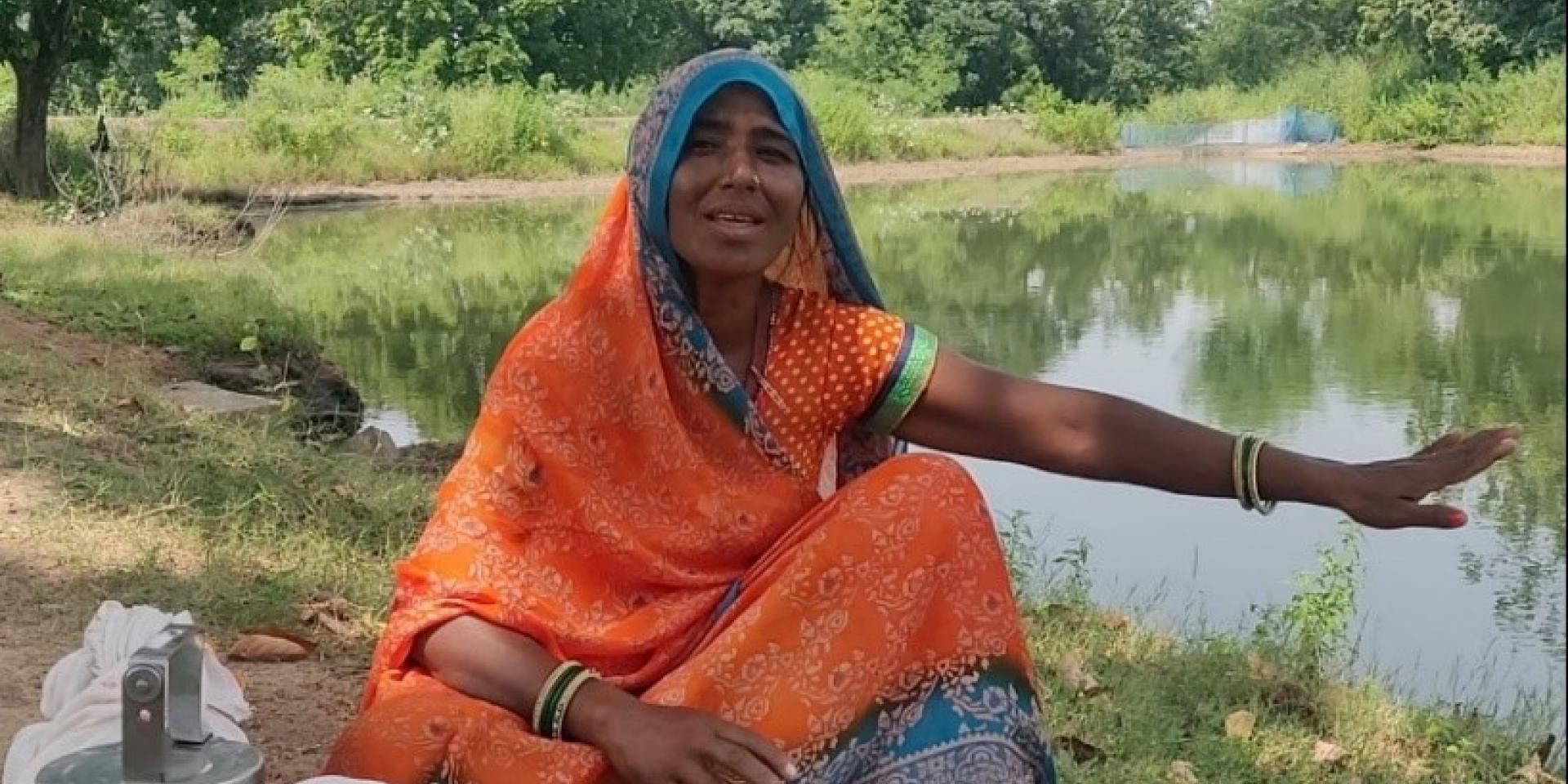Improved water management practices empower women in the drylands of India

Water reverses climate change effects and shapes women’s lives in Bundelkhand, India: A case study in Bundelkhand, India (recording the results at the end of 2023). This feature was originally published at Wikifarmer.
This blog post was authored by Jemima Mandapati- Eliot as part of the CGIAR GENDER Impact Platform training on telling stories about agricultural solutions that work for women. This training took place, in part, during the 2023 CGIAR GENDER conference on October 9-12, 2023, in New Delhi, India. The blog post was first published by Wikifarmer but it is re-posted as below.
The increased temperatures and fluctuating rainfall patterns caused by climate change and the over-extraction of groundwater have led to desertification in many locations in the Bundelkhand region.
Not too long ago, much of the landscape in Bundelkhand was a bare, dry expanse. However, now you can drive past green fields interspersed with orchards and ponds in areas where water conservation is practiced. As migrant farmers return to farm their lands, the rise in agricultural activity can also be witnessed.
Water tables have risen in the pilot experiment villages of Lalitpur, Singar, and Sutta villages (in the Bundelkhand region of Jhansi, Uttar Pradesh) with the adoption of science-led rainwater harvesting methods and the construction of structures with government support and community involvement.
In a mere 3–5 years, the transformation is evident, especially in the way it has benefited the lives of women living in a highly patriarchal society. Issues still need attention, both from a policy and societal point of view, but that does not take away from the women’s initiative and drive to adapt and take on new roles.